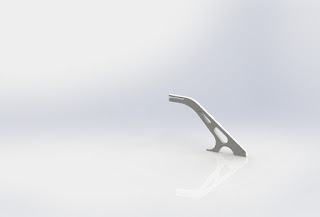Bevore making chips, you need to know where your tool stands
relative to your workpiece. Naturally, setting Z is most critical when changing
tools. Whenever you put a new tool into the spindle, you will want it to have
exactly the right offset.
The simplest and cheapest way to do it is using a
touchplate. Just connect one wire to your spindle, the other one to a piece of
PCB on top of your workpiece. Using a simple script (use the pre-installed
button script „auto tool zero“ in Mach 3), the z-axis is moved down until your
tool touches the pcb. This position ist then defined as… no, not as zero, but as
e.g. “2mm“, or whateve the thickness of your touchplate happens to be. The
spindle then retracts to a given height (5 mm above zero, in my case). This way
of touching off basically costs nothing at all (well, two cables and a small
piece of scrap pcb you got laying around). My machine´s resolution is 0,0025 mm. But, how
precise is the touchoff process itself?
Well, let´s find out!
First, i did a short repeatability test, touching off again
and again 50 times in a row. This is, touch off, note down machine coordinates,
touch off again, etc. Then i paused for 5 minutes, then did another 50 touch-off´s.
Inbetween the touchoffs, the touch plate was not moved nor touched with my
fingers.
After the first 100 measurements, i did a row of 25 further
measurements. Onty this time, the touch-plate was picked up with my fingers and
then placed back on top of the material.
Let´s have a look at
the results (y axis scaling is in mm):
As you can see, the first 50 measurements are pretty
accurate, only changing aound +0/-0,025, which is exactly the machine´s
accuracy. This means, touching the plate is detected within one microstep of the
stepper. Pretty impressive!
The next 50 measurements done after the break are
more scattered, but accurate well within 1/100 mm. Not too bad, apart from those three outliers!
Now, on the last 25 measurements. I picked up the tough
plate after every measurement, which is how you would do it normally. The results
are varying greatly, scattered over 5/100mm. I can only guess all the errors that
are adding up here: Varying touchplate thickness, uneven workpiece surface,
touchplate not lying exactly flat on workpiece surface etc. In real life, there
might be a chip or two stuck on top of your workpiece, even making everything
worse.
So, seems like my
touch-off process can be improved. What do you think?

























